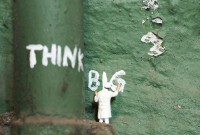- Home
- Business Processes
- Industry Knowledge
- Aerospace Industry
- Automotive Industry
- Banking Domain
- BFSI Industry
- Consumer/ FMCG Industry
- Chemicals Industry
- Engineering & Construction
- Energy Industry
- Education Domain
- Finance Domain
- Hospitality Domain
- Healthcare Industry
- Insurance Domain
- Retail Industry
- Travel and Tourism Domain
- Telecom Industry
- Leadership Skills
- eLearning
- Home
- Leadership
- Time Management
- Types of Business Change
Types of Business Change
Change is a complex phenomenon. There are different types of changes that are going on around us. Listed in this article are twelve areas in which change arises and bring some classification to it. However one may classify the change, the various heading is always interrelated. The change could be triggered by market changes, technological changes, or organizational changes.
There are several models of organizational change. A model is an integrated way of explaining why and how change takes place, based on a known and acceptable basic explanation (theory) of relationships of several aspects involved. It would be obvious that there can be different ways of explaining the change, depending on what theory we follow or use.
1. Trickle-Down Model
Two contrasting models of change are the "trickle-down" model vs. "identity search" model. In the trickle-down models of change, the change is driven by the elite group. The organizational change occurs because the top management takes a decision and adopts some new ways (technology, systems, structure, etc.) and others follow it.
2. Identity Search Model
According to the Identify Search Model, the urge to develop one's own uniqueness and identity will make the group or individuals accept change.
3. Internal Change
Another way is to look at change is to look for the external or internal forces as determinants of changes. Change can be a result of internal factors like changes in the direction and objectives and ideology of a company or a workforce.
4. External Change
The changes, which occur within the business, can result from external environments such as the development of technology, globalization of markets, or new competitors on the market.
5. Adaptation Model
Business models change as managers engage in more mundane adaptation in response to external changes. The adaptation model emphasizes the role of external factors (for example a new government policy, or competitive environment) in producing a change in organizations (more emphasis on quality, restructuring, etc.). To respond positively to environmental changes, the person must adapt.
6. Proactive Model of Change
According to the proactive model, the explanation comes from within the organization (the decision of the organization to set an example, to be a leader, to anticipate the future) and act and change itself in response to such an internal urge. Companies that take a proactive approach to change are often trying to avoid a potential future threat or to capitalize on a potential future opportunity. Corrective action was being taken before a market decline or before technology became obsolete. Positive action was being taken to seize competitive advantage before someone else did.
7. Structural Model of Change
Yet another explanation of organizational change may lie in the emphasis on the structure or the process. Structural change refers to a dramatic shift in the way a country, industry, or market operates. Successful change, according to the structure model, would require preparing the necessary structural details (technology, design of the organization, systems), and introduce them systematically.
8. Process Model of Change
The process of change entails creating the perception that a change is needed, then moving toward the new, desired level of behavior and, finally, solidifying that new behavior as the norm. People will also change, according to the process model, successful change can be planned by helping people to develop process competencies (ways of planning, decision-making, problem-solving, collaborating, communicating, etc.), and then people will find new ways of organizing, etc.
9. Adaptive Change
Adaptive change requires new learning for problem definition and solution implementation. Adaptive change requires auditing of existing systems, roles, and responsibilities. This process can often result in essentially rebuilding the entire company by redefining job descriptions, consolidation, elimination of overlap, and creating greater efficiencies. This involves the reimplementation of a change in the same organizational unit. Adaptive change is not considered threatening.
10. Innovative Change
An organization needs to constantly innovate to succeed. Innovation is about making things better, faster, or cheaper. Dynamically continuous innovation affects the way in which the company adapts to changing market conditions. This involves changes that are generally new and unfamiliar. The innovative changes create a kind of uncertainty and fear in organizations.
11. Radically Innovative Change
Radical innovation is an invention that destroys or supplants an existing business model. Radical innovation is the long-term growth strategy for revolutionary business transformation. The concept of radical innovation is about leveraging core competencies for the future and this is the most intimidating type of change. This type of change is most resisted in organizations. Radical innovation creates such a dramatic change in processes, products, or services that they transform existing markets or industries, or create new ones. Implementation of a radical change in an organization requires a long-term strategy.
12. Reactive Change
This is a change brought about by a sudden or unplanned event. Whereas the planned change is a systematic, deliberate change in the way part or all of an organization functions. In planned change the focus is on processes, people, or technology; and one person, a project team, a department, or the entire firm can be involved in the change process.
Related Links
You May Also Like
-
Understanding of how individuals of different cultures interact with each other is very important. Not all individuals can adapt to the leadership styles expected in a different culture whether that culture is organizational or national. In a fast-paced business environment, developing a richer understanding and sensitivity to other cultures is a skill that leaders must possess. Learn to be effective in a cross-cultural setting.
-
We define Lean as the systematic elimination of waste through a continual effort to decrease inefficiency; the lean leader strives to create a more efficient organization. Lean leadership is a philosophy. It is a consistent way of thinking and being in your role as a leader. The focus of this approach is on raising new leaders and help their team embrace a culture of continuous improvement. Learn what we mean by lean leadership style and its principles.
-
A good leadership style is something that every effective leader must have in order to succeed, but identifying what that entails or does not entails might be difficult to understand. Most of the research on leadership focuses on the exemplary, best practices, and positive attributes of effective and successful leaders. This article talks about a new approach to learn leadership using lessons from bad leadership. That is the lessons to be learned by examining leaders who have not effectively exercised their power, authority, or influence.
-
A manager or an employee in an organization who is experiencing a high level of stress may develop high blood pressure, ulcers, irritability, difficulty in making routine decisions, loss of appetite, accident proneness, and the like. These can be subsumed under three general categories, physiological, psychological, and behavioral symptoms. Stress can give rise to a number of changes.
-
Team Foundation in Forming Stage
This is the first stage of team development. This is the stage when the foundation of the team is laid. During the Forming stage, team members have a high dependence on their leader for guidance. Learn the practical strategies you can use during this stage to help your team develop into a highly effective performing team.
-
In today's innovation-driven economy, understanding how to generate great ideas has become an urgent managerial priority. Managers need to encourage and champion ideas and need to help their organizations incorporate diverse perspectives, which spur creative insights and facilitate creative collaboration by harnessing new technologies. Innovation is the embodiment, combination, and/or synthesis of knowledge in original, relevant, valued new products, processes, or services.
-
Teams are part of the modern organizational culture. Whether you are a team leader or a team member, having a better understanding of how teams work, and being able to identify where the team is in the process, is a critical part of ensuring the team is ultimately successful. Start with the basics and understand what a team is and what role they play in an organization.
-
Tools for Developing Your Team
If a manager has too many weak spots in the talent of the team, the ability to empower the team members to independently execute the project is impaired. Assignments fall behind schedule or stretch out because the needed skills or knowledge are not in place when needed. To successfully execute important projects, hiring talented people, and increasing the talents of existing staff are most important.
-
Understanding Corporate Strategy
Management outlook and procedures have been revolutionized by more and more innovations over the recent years. It is no longer possible to follow traditional approaches to develop your organization's direction, its management as well its effectiveness. Senior managers need to be good decision-makers. In this section, we introduce concepts for strategy, strategic planning, strategic leadership, their exact meaning and associated terms, and how to use them.
-
Listening is the foundation for good communication. It is also the hardest skill to master. Do you listen to confirm what you already know, or do you listen to explore and learn new things? How can we create receptive communication as a listener? The real art of listening involves awareness and sensitivity to the feelings of the speaker because it is at the feeling level that genuine connection, relationship, and healing occurs.
Explore Our Free Training Articles or
Sign Up to Start With Our eLearning Courses

About Us
Learning
© 2023 TechnoFunc, All Rights Reserved










